Día de la Tierra (Earth Day), on April 22, is a big day for Costa Rica.
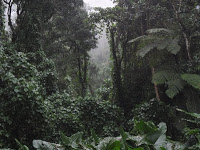 It could be because Costa Rica does so much to preserve its land and rainforest. In fact, the government presented a plan to protect 18 percent of the country in national parks and another 13 percent in privately owned preserves in 1995. And now, Costa Rica has an ambitious conservation program – perhaps one of the most developed among tropical rainforest countries – that protects more than 10 percent of the country. Due to these programs of conservation of its rain forest, Costa Rica remains in the top ranks on the 2010 Environmental Performance Index (EPI).
It could be because Costa Rica does so much to preserve its land and rainforest. In fact, the government presented a plan to protect 18 percent of the country in national parks and another 13 percent in privately owned preserves in 1995. And now, Costa Rica has an ambitious conservation program – perhaps one of the most developed among tropical rainforest countries – that protects more than 10 percent of the country. Due to these programs of conservation of its rain forest, Costa Rica remains in the top ranks on the 2010 Environmental Performance Index (EPI).
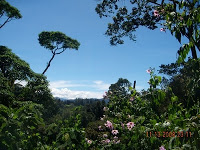
Only 6 percent of the country is arable, the smallest percentage of any of the Central American countries. Over 34 percent of the country is still forested, and there have been stringent ecological controls, with the Costa Rican tourist industry relying on an eco-friendly image. Twenty-seven percent of Costa Rica is covered by a system of national parks, wildlife refuges, and biological reserves. Even around San Jose, the largest urban area of Costa Rica, there is a 200-meter “Green Belt,” an environmental buffer zone that encircles the greater metropolitan area.
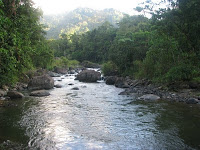
Current Environmental Issues
Yet, with all of these efforts to be environmentally aware, Costa Rica still faces issues of deforestation and land use change (as a result of cattle ranching, agriculture, mining, urbanization), soil erosion, coastal marine pollution, fisheries protection, solid waste management, and air pollution. In the last 4 years pineapple production has expanded from 15,000 hectares to more than 54,000 hectares. In 2008, the restriction on mining for metals in Costa Rica was lifted. Some groups want to urbanize in the reserved “Green Belt” around San Jose.
However, Costa Rica has made progress towards more sustainable use of its natural resources. For example, it has decreased the deforestation rate from 43,000 hectares in 1983 and 13,000 in 1993, to an average of 5,000 in the last 5 years. And it 2021, it plans to be the first carbon neutral country in the world! (The quest for carbon neutrality seeks to balance the amount of carbon dioxide a country releases by burning fossil fuels with the amount that it captures or offsets by, for example, planting trees.)
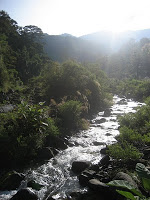
This information was gathered as a result of The Convention on Biological Diversitywhich has been gaining momentum in the last couple years. It was inspired by the world community’s growing commitment to sustainable development and represents a dramatic step forward in the conservation of biological diversity, sustainability, and the fair sharing of benefits from the use of genetic resources. As part of the process, a thorough investigation of the country’s natural resources and status has been done. They found Costa Rica to have:
- 87,000 species (6.2% of the known species in the world)
- 10,979 plant species
- 2,430 vertebrate (including 935 fish, 857 birds, 243 mammals, 235 reptiles, and 182 amphibians)
Rainforests are important for many reasons, aside from the 50 percent of the Earth’s animals and plants they protect. 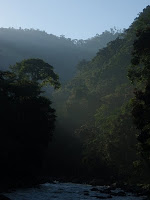 Medicines of all kinds come from the rainforest. More specifically, seventy percent of the plants identified by the U.S. National Cancer Institute as useful in the treatment of cancer are found only in rainforests; more than 2,000 tropical forest plants have been identified by scientists as having anti-cancer properties. Rainforests are critical in maintaining the Earth’s limited supply of drinking and fresh water. And these days, with Global Warming on everyone’s mind, it is important to know that rainforests act as the world’s thermostat by regulating temperatures and weather patterns.
Medicines of all kinds come from the rainforest. More specifically, seventy percent of the plants identified by the U.S. National Cancer Institute as useful in the treatment of cancer are found only in rainforests; more than 2,000 tropical forest plants have been identified by scientists as having anti-cancer properties. Rainforests are critical in maintaining the Earth’s limited supply of drinking and fresh water. And these days, with Global Warming on everyone’s mind, it is important to know that rainforests act as the world’s thermostat by regulating temperatures and weather patterns.
Costa Ricans are recognizing Earth Day a few different ways this week. Namely, there was an Earth Day Celebration at Volcán Poas National Park yesterday all day. The local Rotaract club is running a recycling program this weekend. Local radio hosts are running environmental debate programs all week.
Costa Rica has maintained its participation in worldwide efforts to increase the earth’s health outside of just Earth Day. It is a member of the following international environmental agreements: Biodiversity, Climate Change, Climate Change-Kyoto Protocol, Desertification, Endangered Species, Environmental Modification, Hazardous Wastes, Law of the Sea, Marine Dumping, Ozone Layer Protection, Wetlands, Whaling. Signed, but not ratified: Marine Life Conservation. They even have an E.A.R.T.H. University!
With all of this giving back to the environment, it makes you wonder if it has an effect on Costa Rica being rated the world’s happiest place.
- Make a pledge to save the rainforest at The Rainforest Site
- Save energy with tips at EnergySavers
- Save water by making toilets low-flow: About 75 percent of the water we use in our homes is used in the bathroom.
- Our Facebook photo album
- Turn off lights you’re not using: Lighting consumes up to 34 percent of electricity in the United States.
- Recycle more: read more facts to motivate you to recycle at http://www.oberlin.edu/recycle/facts.html
(all photos taken by students on course here in Costa Rica)
Sources: The Rainforest Site, Wikipedia, Earth Day, CIA World Factbook, Costa Rica Conservation Network blog, Oberlin College Resource Conservation Team, Mongabay, National Geographic